Decision Spread
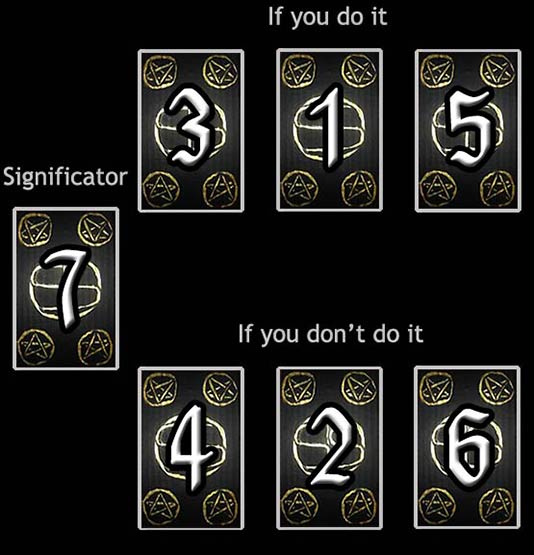
Difficulty: Easy
This simple but highly useful spread calls for a question to be asked in this format:
'What happens if I do (X), and what happens if I do not do (X)?'
Please note that it should not be viewed as a decision between two different options, but about whether a single option should be exercised or not. A second option would call for a separate reading.
Card #7 is the significator, the overall theme of the query.
Cards #3, #1, & #5 represent the chronological sequence of events that occurs if the reader chooses to do (X).
Cards #4, #2, & #6 represent the chronological sequence of events that unfolds if the reader chooses not to do (X).
Your Decision Reading
The Significator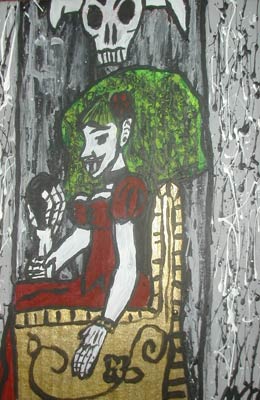 III. The Empress |
Outcome if you do it: | ||
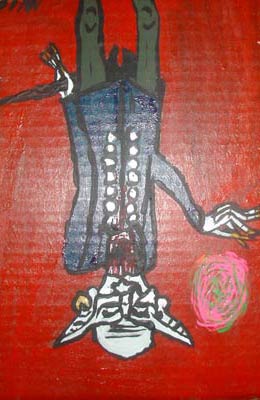 I. The Magician |
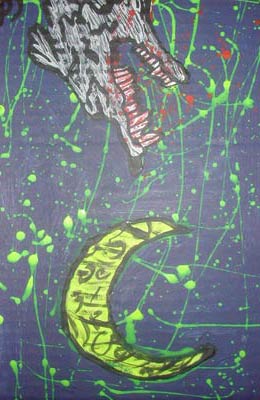 XVIII. The Moon |
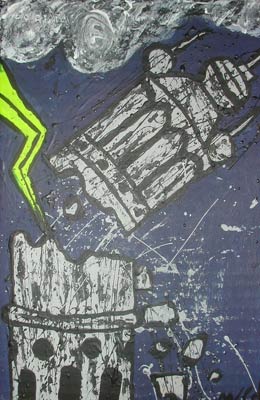 XVI. The Tower |
|
| Outcome if you don't do it: | |||
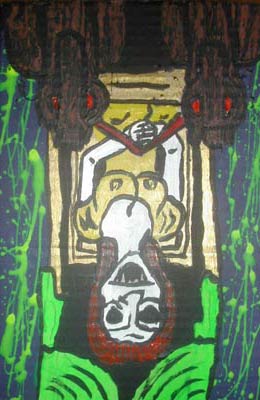 VII. The Chariot |
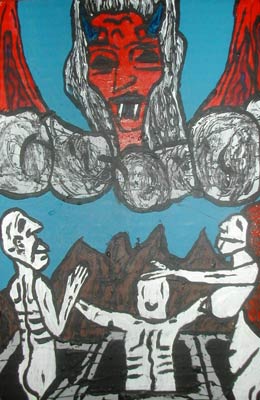 XX. Judgement |
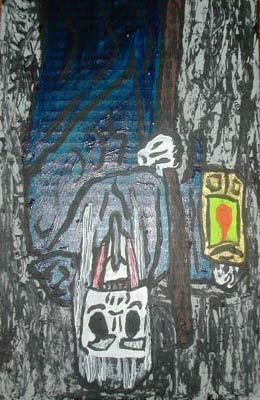 IX. The Hermit |
|

III. The Empress
Symbolism:
The Empress sits upon her throne, her presence commanding yet nurturing. She holds the Hand of Glory, a macabre artifact symbolizing her power to claim whatever she desires. Her surroundings are lush and fertile, with dark roses blooming amidst the decay—symbols of beauty and abundance arising from even the grimmest conditions. Her expression is one of calm authority, radiating life-giving energy.
Meaning:
The Empress represents creation, fertility, and the nurturing aspects of life. She signifies abundance and the ability to bring ideas, projects, or relationships to fruition. This card invites you to connect with your creative or maternal instincts and embrace the cycles of growth and renewal. It may also point to emotional or physical abundance and a celebration of life's pleasures.
Keywords:
Upright: Fertility, abundance, creation, nurturing, beauty, growth, motherhood, diplomacy.
Outcome if you do it:

I. The Magician
Reversed
Symbolism:
The Magician is depicted as a Nosferatu vampire standing in a commanding pose, a sphere of influence hovering above his outstretched hand. This sphere glows with an otherworldly light, symbolizing his power to manipulate unseen forces. His posture exudes confidence, and the tools of his craft—representing the elements—are subtly embedded in the imagery, hinting at his mastery over earth, air, fire, and water. The shadows around him pulse with potential, representing untapped energy and possibility.
Meaning:
The Magician embodies willpower, creativity, and the ability to manifest one's desires. He is the ultimate initiator, reminding you that you have the power within to transform ideas into reality. This card urges action and focus, calling upon the seeker to harness their innate talents and take charge of their destiny. In situations requiring ingenuity or problem-solving, the Magician assures you that all the tools you need are at your disposal.
Reversed, this card warns of misuse of power, manipulation, or deceit. It may suggest self-doubt, a lack of clarity, or misguided actions that backfire due to overconfidence or ill intentions.
Keywords:
Reversed: Manipulation, deception, power misuse, lack of direction, overconfidence, self-doubt.

XVIII. The Moon
Reversed
Symbolism:
The Moon is depicted as a blood-red orb casting an eerie glow over a desolate landscape. Two wolves—one dark and one light—howl at the moon, representing instinct and duality. A twisted, thorn-covered path winds between them, leading into a dense forest shrouded in mist. Shadows shift and twist unnaturally, suggesting the illusions and fears that dwell in the subconscious.
Meaning:
The Moon symbolizes intuition, dreams, and the realm of the subconscious. It warns of illusions, hidden truths, or fears clouding your judgment. This card encourages trusting your instincts and exploring your inner world to uncover what lies beneath the surface.
Reversed, the Moon suggests confusion, deception, or emotional instability. It may indicate clarity beginning to emerge or the need to confront unresolved fears.
Keywords:
Reversed: Confusion, deception, fear, emotional instability, clarity, suppressed truths.

XVI. The Tower
Symbolism:
The Tower is shown as a crumbling gothic spire, struck by lightning and engulfed in flames. Figures are seen falling from the heights, their faces contorted in shock and despair. The dark sky above swirls with storm clouds, while the ground below splits open, exposing molten lava. Amid the destruction, a single raven perches on the rubble, symbolizing the potential for renewal through upheaval.
Meaning:
The Tower represents sudden upheaval, revelation, and the breaking down of false structures. It signals a dramatic, often unexpected event that shakes the foundations of your life, forcing you to confront harsh truths. While challenging, this card ultimately clears the way for genuine growth and transformation.
Keywords:
Upright: Upheaval, revelation, chaos, destruction, truth, transformation, awakening.
Outcome if you do not do it:

VII. The Chariot
Reversed
Symbolism:
The Chariot is a sinister yet majestic vehicle drawn by two spectral horses, one black and one white, representing opposing forces. A Nosferatu figure stands at its helm, cloaked in shadows, holding a whip of shadowy tendrils. The chariot races through a mist-laden nightscape, its wheels crushing fallen leaves and brittle bones, symbolizing the journey's sacrifices and challenges.
Meaning:
The Chariot signifies determination, control, and the will to overcome obstacles. It calls for focused effort and harnessing conflicting energies to achieve a goal. This card often appears when decisive action and self-discipline are needed to navigate a complex situation. It encourages you to take charge of your direction and steer with purpose.
Reversed, the Chariot warns of recklessness, a loss of direction, or being overwhelmed by opposing forces. It may also point to a lack of confidence or an inability to move forward.
Keywords:
Reversed: Lack of control, recklessness, stagnation, self-doubt, misdirection, failure to progress.

XX. Judgement
Symbolism:
Judgment depicts a haunting scene of the dead rising from crypts bathed in an eerie, silvery glow. A vampire angel hovers above, blowing a trumpet, its sound visible as luminous, curling waves. The figures below lift their arms skyward, drawn by the call to awakening. A massive, ancient tree stands in the background, its roots tangled with bones, symbolizing the cyclical nature of life and death.
Meaning:
Judgment signifies renewal, self-assessment, and a call to rise above the past. It asks you to confront your actions, choices, and truths, encouraging accountability and forgiveness. This card often appears during moments of profound transition, marking the opportunity to shed old burdens and embrace a higher purpose.
Keywords:
Upright: Awakening, renewal, self-assessment, reckoning, forgiveness, rebirth, transformation.

IX. The Hermit
Reversed
Symbolism:
The Hermit is depicted as an ancient vampire cloaked in tattered robes, holding a lantern that emits an eerie, bluish glow. He stands atop a desolate mountain peak, surrounded by swirling mist. The lantern's light reveals faint traces of hidden paths, while his posture suggests quiet contemplation. The darkness around him symbolizes isolation, while the light represents the wisdom gained through introspection.
Meaning:
The Hermit signifies solitude, introspection, and the search for deeper truths. He encourages stepping back from external distractions to seek clarity and wisdom within. This card often appears when you need time alone to reflect on your journey or make decisions based on your inner guidance. It may also indicate the guidance of a mentor or wise figure.
Reversed, the Hermit warns against excessive isolation, withdrawal, or fear of confronting the truth. It may suggest a refusal to seek or accept guidance when it's needed.
Keywords:
Reversed: Isolation, loneliness, avoidance, overthinking, fear of change, denial.
